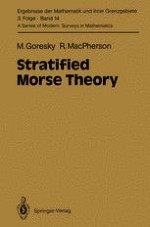Due to the lack of proper bibliographical sources stratification theory seems to be a "mysterious" subject in contemporary mathematics. This book contains a complete and elementary survey - including an extended bibliography - on stratification theory, including its historical development. Some further important topics in the book are: Morse theory, singularities, transversality theory, complex analytic varieties, Lefschetz theorems, connectivity theorems, intersection homology, complements of affine subspaces and combinatorics. The book is designed for all interested students or professionals in this area.
